10 Wild Animals in Antigua And Barbuda [Wildlife in Antigua And Barbuda]
Want to know more about the wildlife in Antigua and Barbuda?
Discover 10 wild animals in Antigua and Barbuda in this post, as well as interesting facts about them. 🇦🇬
Learn All About Antiguan and Barbudan Animals
Ready to learn all about Antiguan and Barbudan animals?
I’ve always been fascinated by animals, and by how they can be so different from one country to another. In this guide, we’ll focus on the many animals Antigua and Barbuda has on the land, in the sky, and underwater.
I’ve split the guide into 4 categories:
- Native animals from Antigua and Barbuda
- Endangered animals of Antigua and Barbuda
- What is the national animal of Antigua and Barbuda?
- How many animals native to Antigua and Barbuda?
Let’s dive in right away with our first category!
Native Animals from Antigua and Barbuda
Antigua and Barbuda is an island country located in the West Indies, in the Americas. It lies between the Caribbean Sea and the Atlantic Ocean. Its capital city is St. John’s, which has more than 22,000 inhabitants.
An interesting part of the country that I wanted to tackle is its wildlife. In light of that, I have listed the best of it, and I hope you will love learning what animals live in Antigua and Barbuda.
Here’s the Antigua and Barbuda animals list.
1. Killer whale
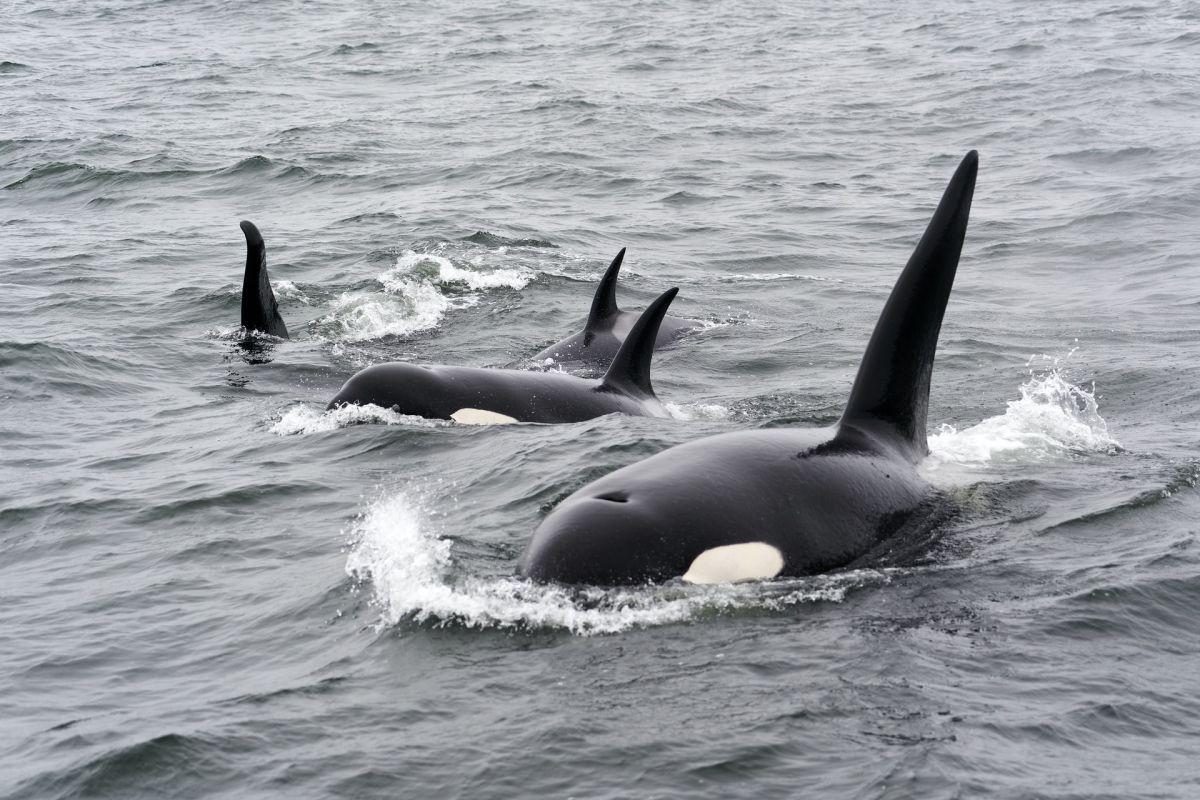
- Name: Killer whale
- Scientific name: Orcinus orca
- Conservation status:
The killer whale, also known as the orca, is the largest of the oceanic dolphins. It is renowned to be a scary-toothed whale that feeds on marine mammals like seals or other species of dolphins. They have no natural predators, making them apex predators, and they are very social: killer whales have the most stable social groups of any animal species, and they very often cooperate. They are also extremely smart, often using their caudal fin to generate waves and knock off seals from icebergs!
2. Sperm whale
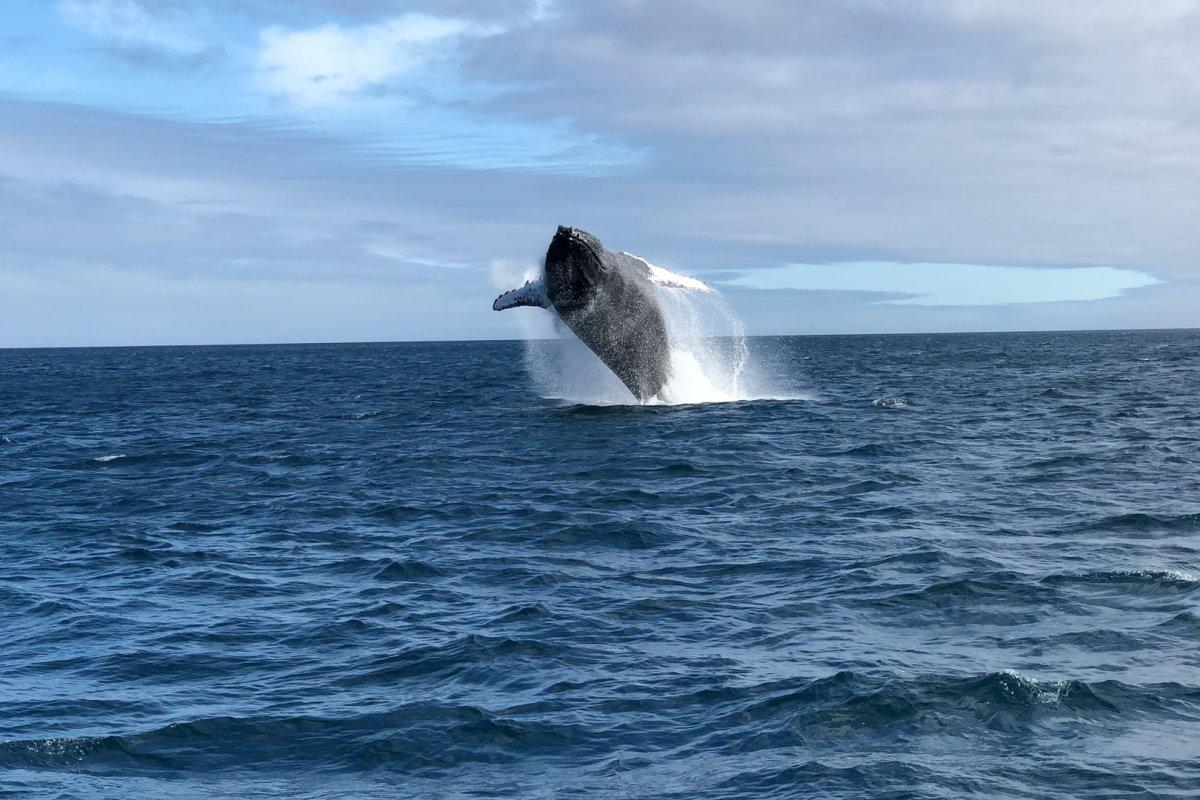
- Name: Sperm whale
- Scientific name: Physeter macrocephalus
- Conservation status:
Our next animal is yet another marine giant: the sperm whale. It is the largest toothed predator on the planet and can be found all around the world, including in the Atlantic Ocean… and in Antigua and Barbuda.
Some male sperm whales can reach up to 20.7 m / 68 ft, and they are known to be deep divers. In fact, this whale is the third deepest diving animal on the planet, beaten only by the southern elephant seal and Cuvier’s beaked whale.
3. Green sea turtle
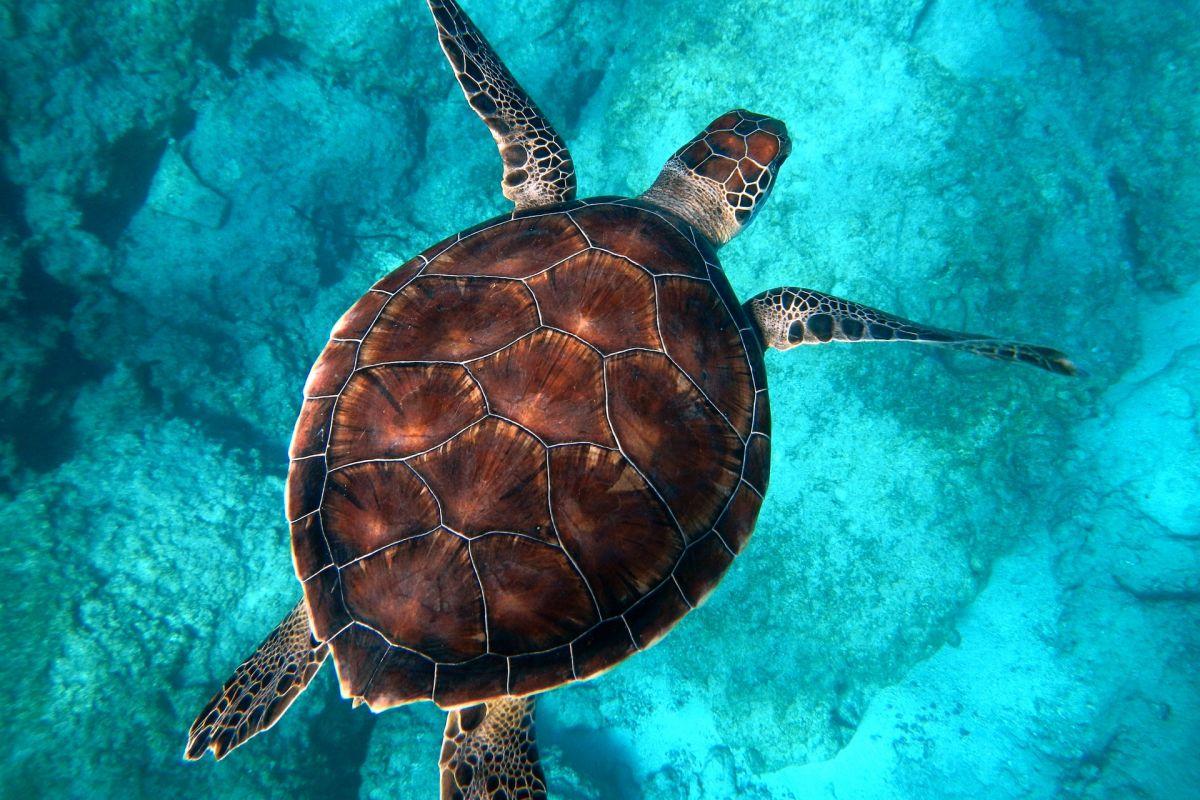
- Name: Green sea turtle
- Scientific name: Chelonia mydas
- Conservation status:
The green sea turtle can be widely found in tropical and subtropical seas all around the world, including in the Atlantic Ocean and the Caribbean Sea. Adult green sea turtles live in shallow lagoons and mostly feed on various types of seagrasses.
Similar to other sea turtles, green sea turtles migrate long distances and lay their eggs on hatching beaches. Though it is illegal to hunt them, these animals are still endangered due to human activity, pollution, and accidents (most notably due to fishing nets).
4. Osprey
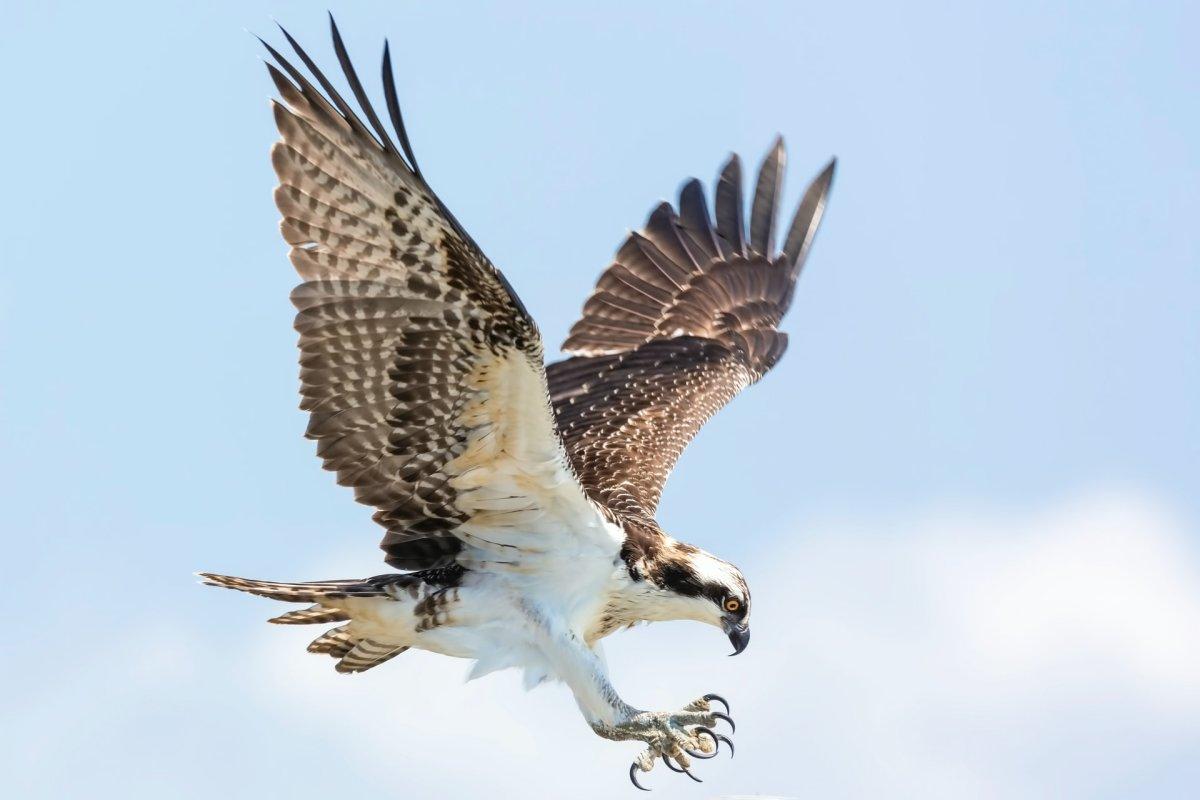
- Name: Osprey
- Scientific name: Pandion haliaetus
- Conservation status:
The osprey, also known as sea hawk and fish hawk, is a fish-eating bird. It reaches more than 60 cm / 24 inch in length, with a fantastic wingspan of 180 cm / 71 in. Most of its body is gray or white, while its wings are brown.
It almost only feeds on fish and is a particularly good fish hunter. The osprey can be found in many parts of the world, and it nests in any location near a body of water.
5. Red-tailed hawk
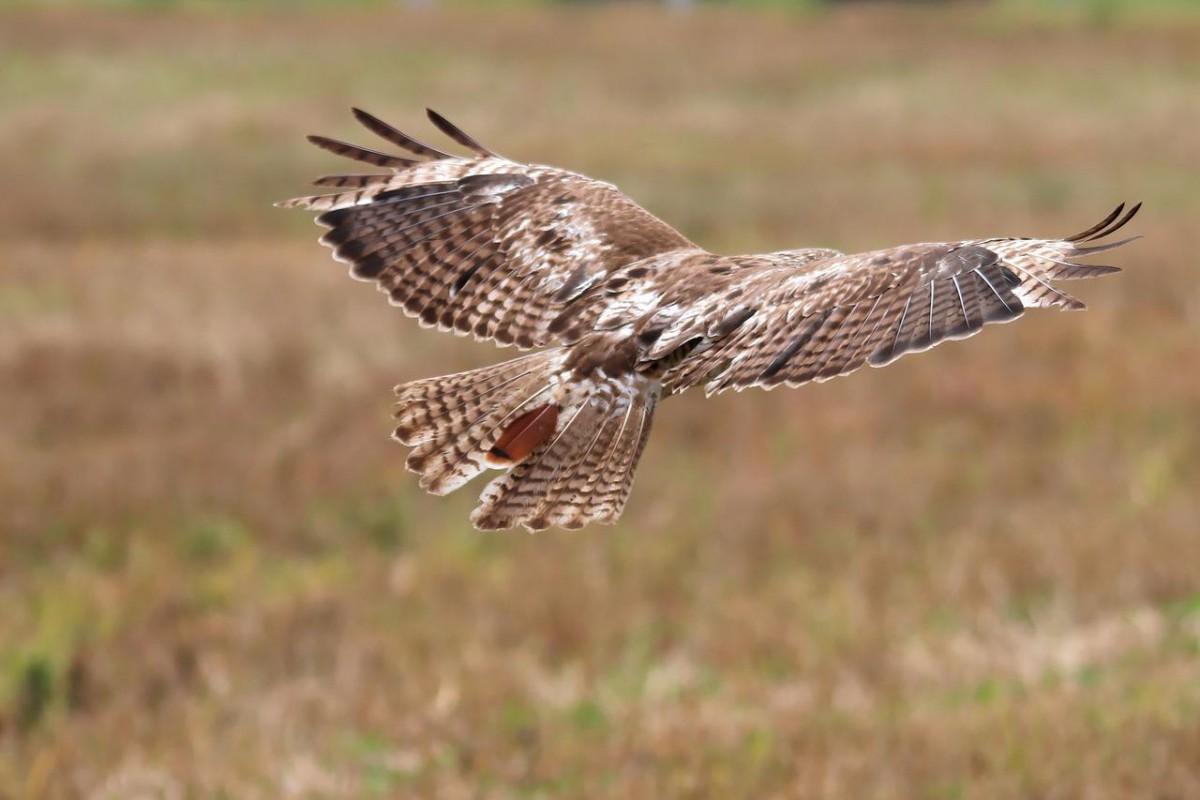
- Name: Red-tailed hawk
- Scientific name: Buteo jamaicensis
- Conservation status:
This second bird is a bird of prey. It can be found in most of North America, including the Caribbean Islands. Its habitat varies from Alaska to Cuba, and it is locally known as “chickenhawk”, even though it very rarely preys on chicken.
The red-tailed hawk is an opportunist and will feed on whatever it can. Because of this, it has no precise diet, but still hunts small mammals such as rodents.
6. Roseate spoonbill
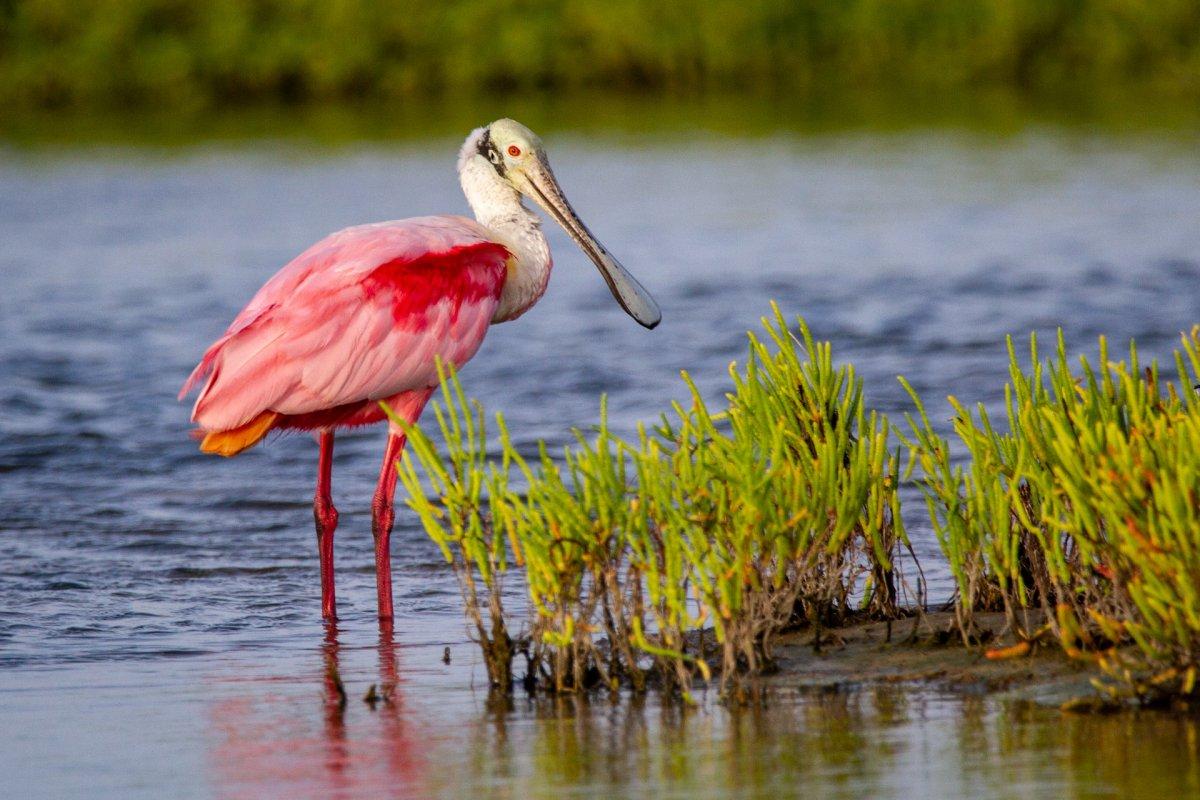
- Name: Roseate spoonbill
- Scientific name: Platalea ajaja
- Conservation status:
The roseate spoonbill is a peculiar-looking bird that can be found throughout most of South America, including some parts of Central America such as its islands. Its name comes from its spoon-like beak that looks flattened. Its colors come from its diet, and it ranges from pale pink to bright magenta.
This spoonbill is found in shallow fresh and coastal waters and feeds on small fish, crustaceans, insects, and frogs.
7. Mexican free-tailed bat
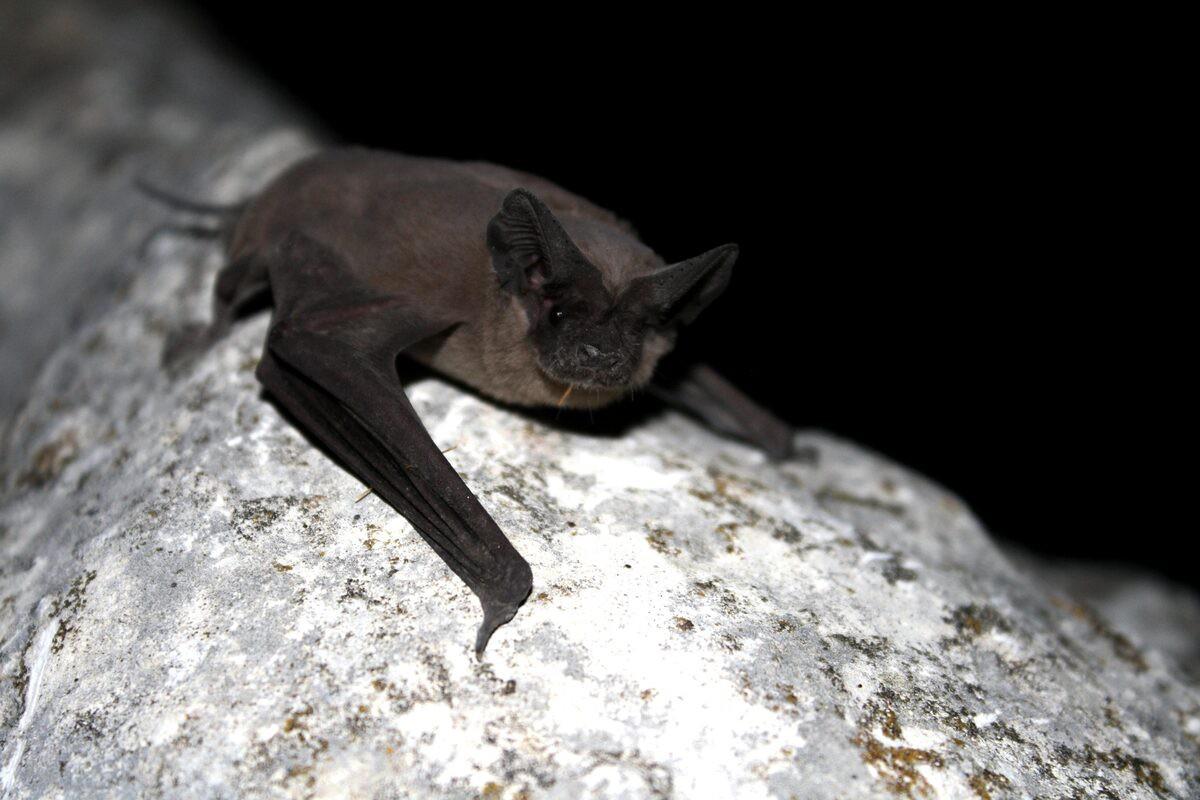
- Name: Mexican free-tailed bat
- Scientific name: Tadarida brasiliensis
- Conservation status:
Despite being named Mexican, this free-tailed bat can be found throughout the Americas. It is in fact one of the most abundant mammals in North America, and it is mostly threatened by habitat destruction.
The average length of a Mexican free-tailed bat is 9 cm / 3.5 in, and females are slightly heavier than males. Their ears are rounded and very wide, and their name comes from their very long tails, which represent almost half their total length.
8. Common bottlenose dolphin
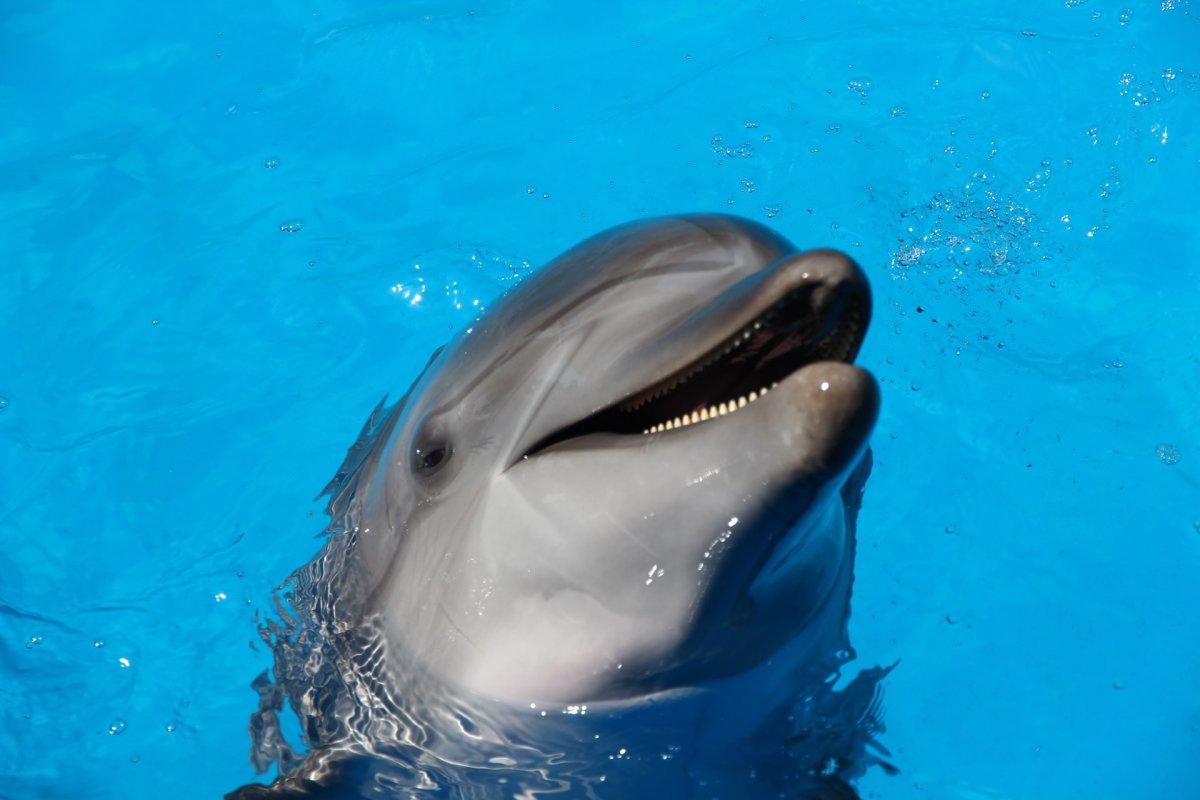
- Name: Common bottlenose dolphin
- Scientific name: Tursiops truncatus
- Conservation status:
The Caribbean waters are home to some truly amazing animals, including the common bottlenose dolphin. It is the most famous species of dolphin, mostly due to captivity in marine parks as well as television and movie exposure.
It lives in temperate and tropical oceans throughout the world. A fun fact about this dolphin is that its brain is larger than a human’s, and it is quite intelligent, having passed self-recognition, object categorization, and use of artificial language tests.
9. Long-billed curlew
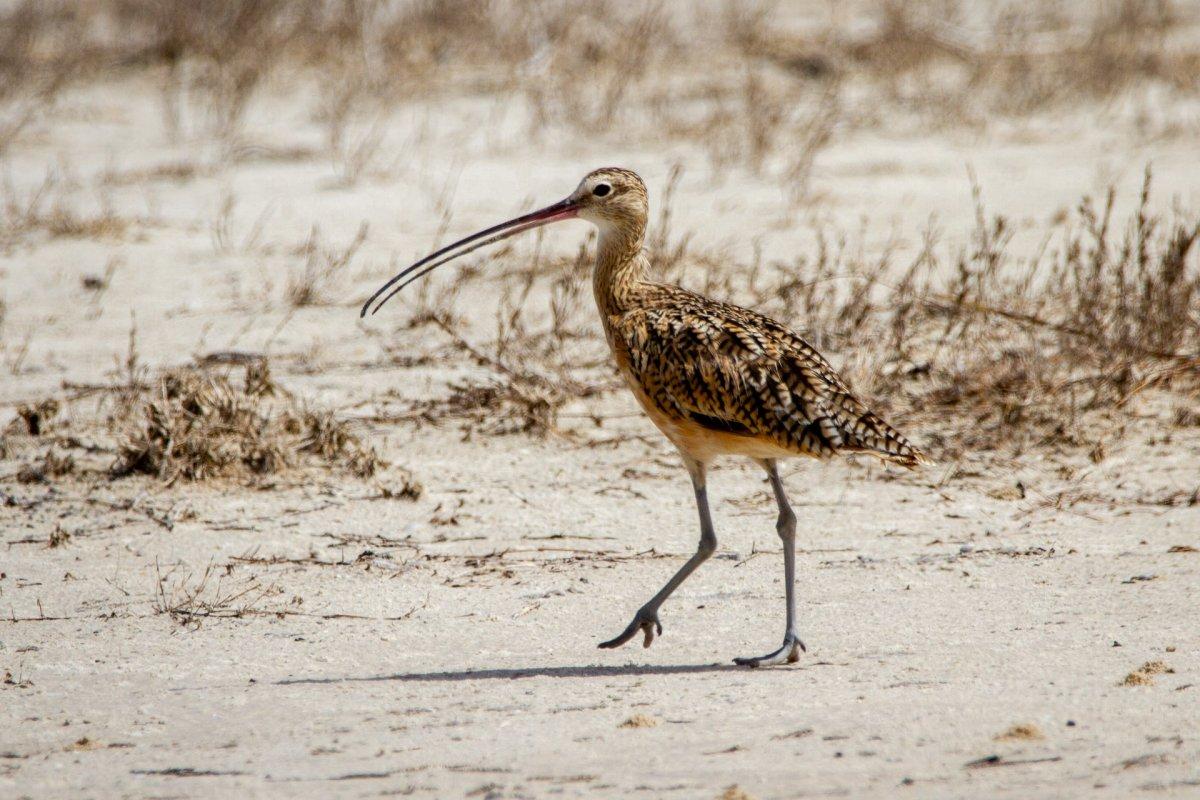
- Name: Long-billed curlew
- Scientific name: Numenius americanus
- Conservation status:
The long-billed curlew is a large bird, native to North America. It can also be found in Central America and several of its islands, including Antigua and Barbuda. It is the largest sandpiper in North America.
Its very long and unique beak is used to find suitable food in the mud. It generally feeds on beetles, grasshoppers, and other insects. It was also seen eating the eggs of other birds.
10. Anhinga
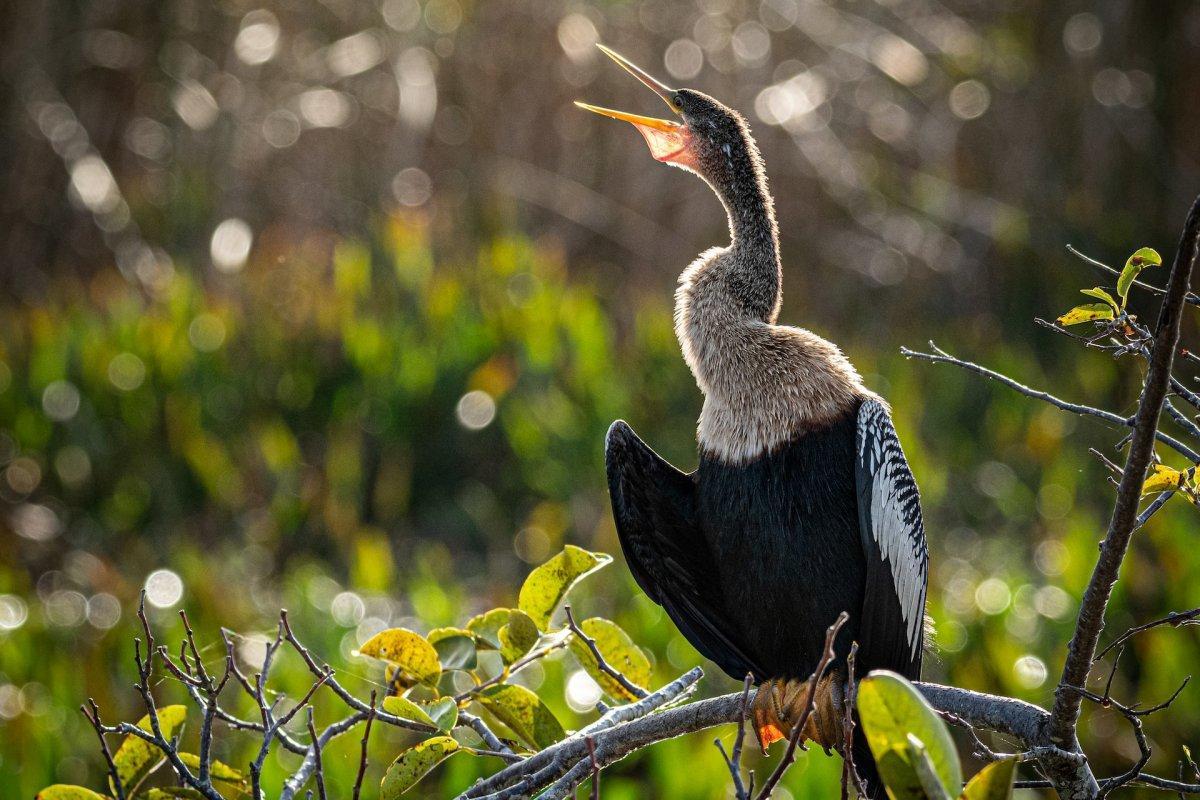
- Name: Anhinga
- Scientific name: Anhinga anhinga
- Conservation status:
The Caribbean islands are home to magnificent and unique birds, like the anhinga. Also known as snakebird or American darter, this bird got its nickname because of its swimming: only the neck appears above water, making it look like a snake ready to strike.
The anhinga has an unusually long neck that it uses to spear its prey, mostly fish. It does not have waterproof feathers, but it is a very efficient hunter.
—
So there you have them, these were my 10 animals native of Antigua and Barbuda. I hope you enjoyed this list and that you learned something new today.
In case you want to learn more about animals in the country, feel free to keep reading, as I still have lots of things to tell you about:
Endangered Animals of Antigua and Barbuda
This is definitely the saddest part of the list, but it is very important to raise awareness. Because of this, let’s go through the list of endangered animals in Antigua and Barbuda.
Here are the animals in danger of extinction in Antigua and Barbuda.
- Redonda skink
- Caribbean monk seal
- Leiocephalus cuneus
- Redonda ameiva
- Redonda anole
- Antiguan racer
- Lesser Antillean iguana
- Hawksbill turtle
- and 5 more…
- Basking shark
- Spinetail devil ray
- Whitespotted eagle ray
- Atlantic chupare
- Caribbean reef shark
- and 16 more…
To see the full list of endangered species in Antigua and Barbuda, head over to the International Union for Conservation of Nature’s Red List.
What is the National Animal of Antigua and Barbuda?
The national animal of Antigua and Barbuda is the European fallow deer.
A European deer on American islands? That sounds peculiar.
Well, the national animal of Antigua and Barbuda is thought to be brought by the Codrington’s at the beginning of the 18th century. Since then, it thrived on the islands, and it can only be found on these islands in all the Caribbeans! The two varieties, black and common, happily live together.
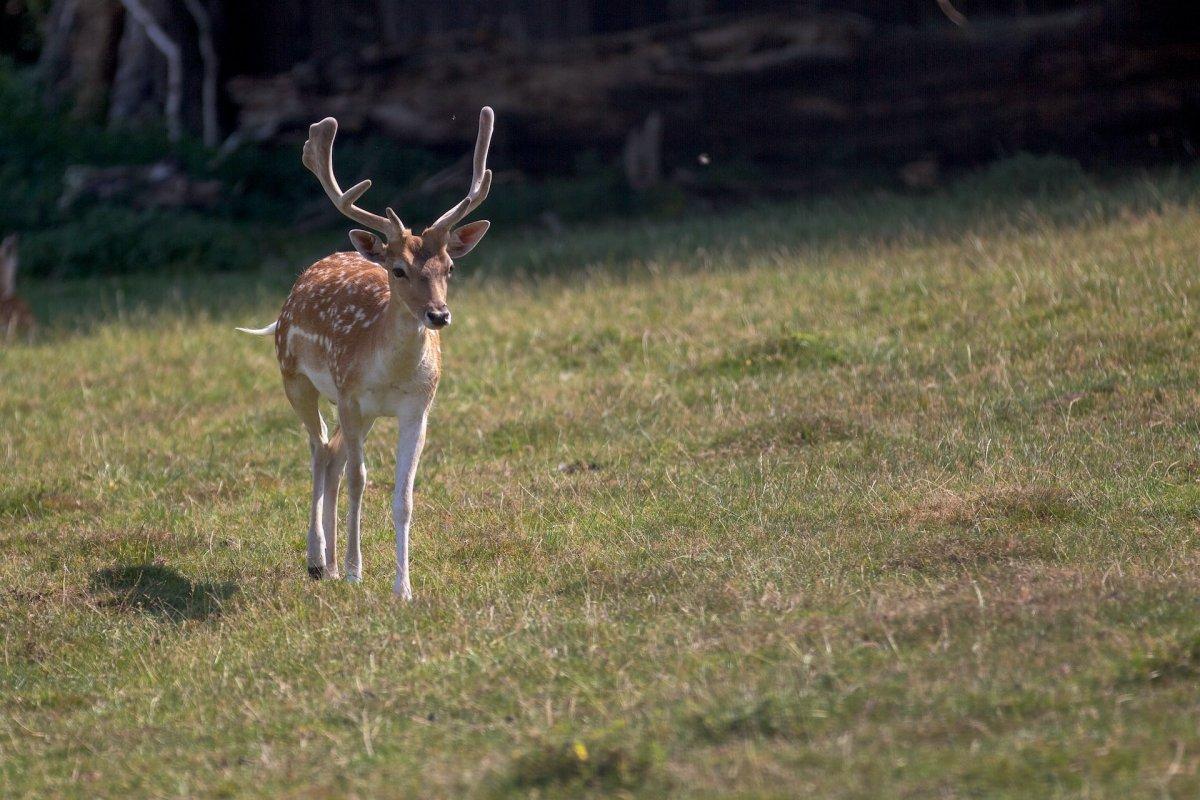
How Many Animals are Native to Antigua and Barbuda?
What is the diversity of native animals in Antigua and Barbuda?
Let’s look at the total number of species of Chordata (mammals, birds, fishes, and reptiles).
Total number of animal species in Antigua and Barbuda: 1,431 (4,171 in total in Caribbean Islands)
More About Animals in the World!
Loved these Antigua and Barbuda wildlife facts? Want to see what animals live in other countries?
Then check out these posts:
Or click here to see ALL the facts up on the blog! Spoiler alert: there’s A LOT of them.
Share the knowledge! Click on the buttons below to share information about these famous animals in Antigua and Barbuda with your friends, and help them learn more about the world 🙂

![13 Wild Animals in Sierra Leone [Wildlife in Sierra Leone]](https://www.kevmrc.com/wp-content/uploads/2022/12/13-wild-animals-in-sierra-leone.jpg)
![16 Wild Animals in Senegal [Wildlife in Senegal]](https://www.kevmrc.com/wp-content/uploads/2022/12/16-wild-animals-in-senegal.jpg)
![33 Wild Animals in Ecuador [Wildlife in Ecuador]](https://www.kevmrc.com/wp-content/uploads/2022/06/33-wild-animals-in-ecuador.jpg)